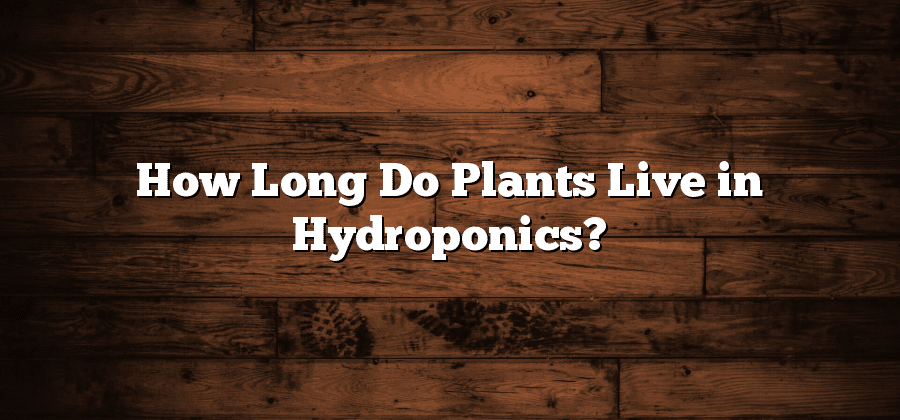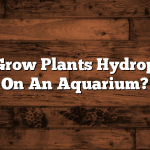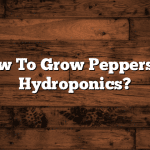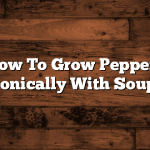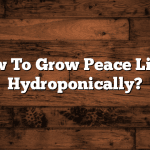Factors influencing plant lifespan in hydroponics
Hydroponics is a highly efficient method of growing plants without soil, but plant lifespan in this system can be influenced by various factors. One critical aspect affecting plant longevity is the quality of the nutrient solution provided. The balance of essential nutrients, such as nitrogen, phosphorus, and potassium, must be carefully maintained to meet the specific requirements of each plant species. Imbalances or deficiencies can lead to stunted growth, susceptibility to diseases, and premature death. Additionally, the pH level of the nutrient solution plays a vital role in plant health. Deviations from the recommended pH range can hinder nutrient absorption and negatively impact overall plant development.
Another influential factor in the lifespan of hydroponic plants is the overall environmental conditions within the growing system. Temperature and humidity levels must be carefully regulated to promote optimal growth and prevent stress-related issues. Excessive heat can lead to dehydration and wilting, while excessively low temperatures can slow down metabolic processes, affecting the plant’s ability to thrive. It is also crucial to consider the airflow and ventilation within the hydroponic setup. Sufficient air circulation helps prevent the buildup of pests, diseases, and excess moisture, all of which can shorten the lifespan of the plants.
Understanding the growth stages of hydroponic plants
The growth stages of hydroponic plants are crucial to understand in order to successfully cultivate them. These stages can be broken down into four main phases: germination, vegetative growth, flowering, and ripening. Each stage has unique requirements and characteristics that must be carefully managed to ensure optimal plant growth.
During the germination phase, seeds are placed in a suitable growing medium and provided with moisture and warmth to encourage sprouting. This stage is critical, as it sets the foundation for the entire plant’s growth. It is essential to maintain the right moisture levels and temperature to promote successful germination. Once the seeds have sprouted, they enter the vegetative growth stage. This is characterized by rapid leaf and stem development as the plant focuses on establishing a strong root system. Adequate lighting and proper nutrient levels are crucial during this phase to support healthy growth and development.
Common challenges that affect plant longevity in hydroponics
Hydroponics, the practice of growing plants without soil, offers many advantages such as increased yield and faster growth rates. However, like any other form of gardening, it also comes with its own set of challenges that can significantly impact plant longevity. One common challenge is inadequate oxygen supply to the roots. In hydroponic systems, the roots are typically submerged in water, and if proper aeration is not provided, they can become deprived of oxygen. This can lead to root rot, stunted growth, and even plant death. Ensuring sufficient oxygenation of the root zone is therefore vital for maintaining plant health and longevity in hydroponics.
Another challenge that affects plant longevity in hydroponics is the accumulation of salts and other mineral deposits in the growing medium. Unlike traditional soil-based gardening, where excess minerals can disperse and leach away, hydroponic systems retain nutrient solutions, which can build up over time. This buildup can result in an imbalance of essential nutrients and create a toxic environment for the plants. Regular monitoring of nutrient levels and implementing proper flushing and maintenance procedures can help prevent these issues and promote the longevity of hydroponic plants.
Maintaining optimal nutrient levels for plant health
Nutrient management is crucial for ensuring the optimal health and longevity of plants in hydroponic systems. Properly maintaining nutrient levels is essential to provide plants with the necessary elements for growth and development. In hydroponics, where plants receive their nutrients directly from the water solution, it is important to monitor and adjust nutrient levels regularly.
One key aspect of maintaining optimal nutrient levels is to ensure a balanced and complete nutrient solution. This means providing plants with the correct ratio and quantity of macronutrients and micronutrients. Macronutrients such as nitrogen, phosphorus, and potassium are required in larger amounts, while micronutrients, such as iron, manganese, and zinc, are needed in smaller quantities. Achieving the right balance is essential for promoting healthy plant growth and preventing nutrient deficiencies or toxicities. Regular testing of the nutrient solution and adjusting the nutrient levels accordingly is crucial for providing the plants with the ideal environment for their growth and development.
In addition to balancing the nutrient solution, regular monitoring of pH levels is also necessary for maintaining optimal nutrient uptake. Hydroponic plants tend to perform best within a specific pH range, usually around 5.5 to 6.5. pH levels outside of this range can hinder the plant’s ability to absorb nutrients, leading to deficiencies or toxicities. By regularly testing and adjusting the pH of the nutrient solution, growers can ensure that plants can effectively take up the nutrients they need for healthy growth.
In conclusion, maintaining optimal nutrient levels is crucial for the health and longevity of plants in hydroponic systems. Providing a balanced and complete nutrient solution, as well as monitoring the pH levels, are key factors in achieving successful plant growth. By carefully managing nutrient levels, hydroponic growers can create an ideal environment for their plants, ensuring they receive the necessary elements for healthy development.
Importance of proper lighting in hydroponic systems
Proper lighting plays a vital role in the success of hydroponic systems. In these setups, where plants are grown without soil and rely solely on water and nutrients, providing the right amount and quality of light is crucial for their growth and development. The importance of proper lighting cannot be understated, as it directly influences the overall health, lifespan, and yield of hydroponic plants.
One of the key reasons why lighting is so important in hydroponics is that it serves as a substitute for natural sunlight. In traditional soil-based gardening, plants receive sunlight for a specific duration each day, which provides them with the necessary energy for photosynthesis. In hydroponics, artificial lighting systems are used to replicate this natural sunlight. By using specific light spectra and adjusting the intensity and duration, growers ensure that plants receive the optimal amount of light they need to thrive. This is particularly important in indoor hydroponic systems, where access to natural sunlight may be limited or inconsistent.
